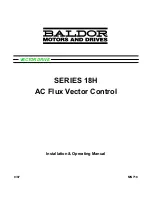
Energy from solar panels will be used:
When loads are connected
- To supply the loads.
- If there is an excess, to charge the battery.
- If battery does not allow further charging (
SOC
100%), the PV generation is reduced.
When loads are not connected:
- To charge the battery.
- If generation exceeds charging capacity, the PV generation is reduced.
In this mode, the power required to supply the loads must not exceed the maximum capacity
of the device.
If the loads require more power than the maximum capacity of the inverter, the device will
reduce the output voltage, to try to keep the loads supplied, until a value of
230 V - 15 % :
195�5 V
. If the power required by the loads exceeds the maximum capacity of the inverter, even
after reducing the output voltage, the device will disconnect the loads.
The device will connect the loads again after 30 seconds. If the loads continue to request more
power than the maximum capacity, the device will disconnect the loads again. If there are more
than 10 attempts per hour, an alarm will be generated and manual rearming will be required.
Energy from batteries will be used:
To power direct loads, if there is not PV generation.
7�2�1�2�- Self-consumption
In this mode, the priority of the inverter is to cancel the loads, both, the connected to AC Out
(direct loads) and the loads measured by an external monitor (indirect loads). In case of grid
failure, the device will keep powered the AC Out loads.
Inverter
Battery
Direct loads
Indirect loads
External power meter
Grid
Figure 52: Energy management strategies: Self-consumption�
If the
SOC
of the battery is below
SOC Min
, the inverter will enter into “
empty battery
” status,
56
CirPower Hyb 4k-48
Instruction Manual















































